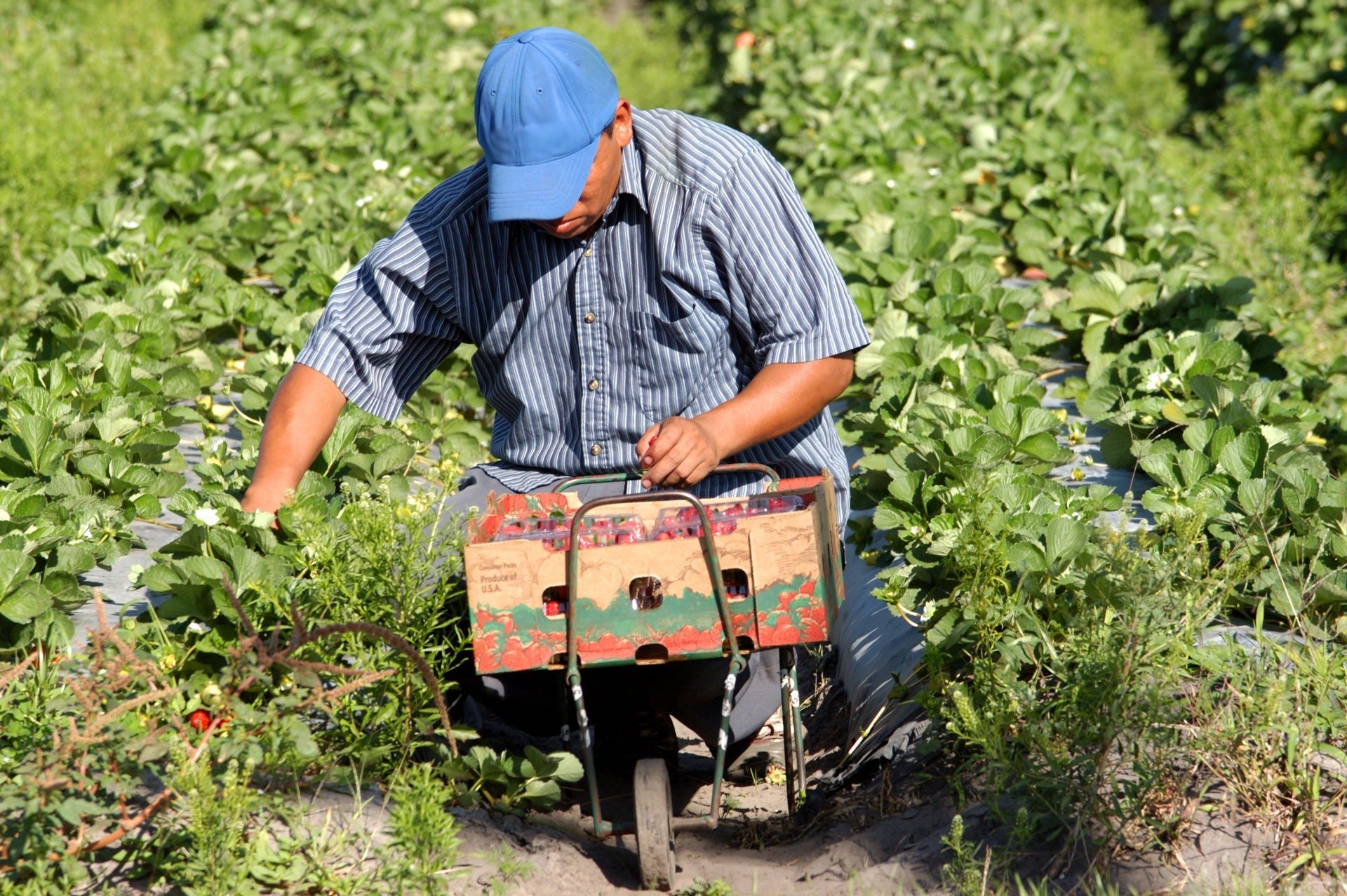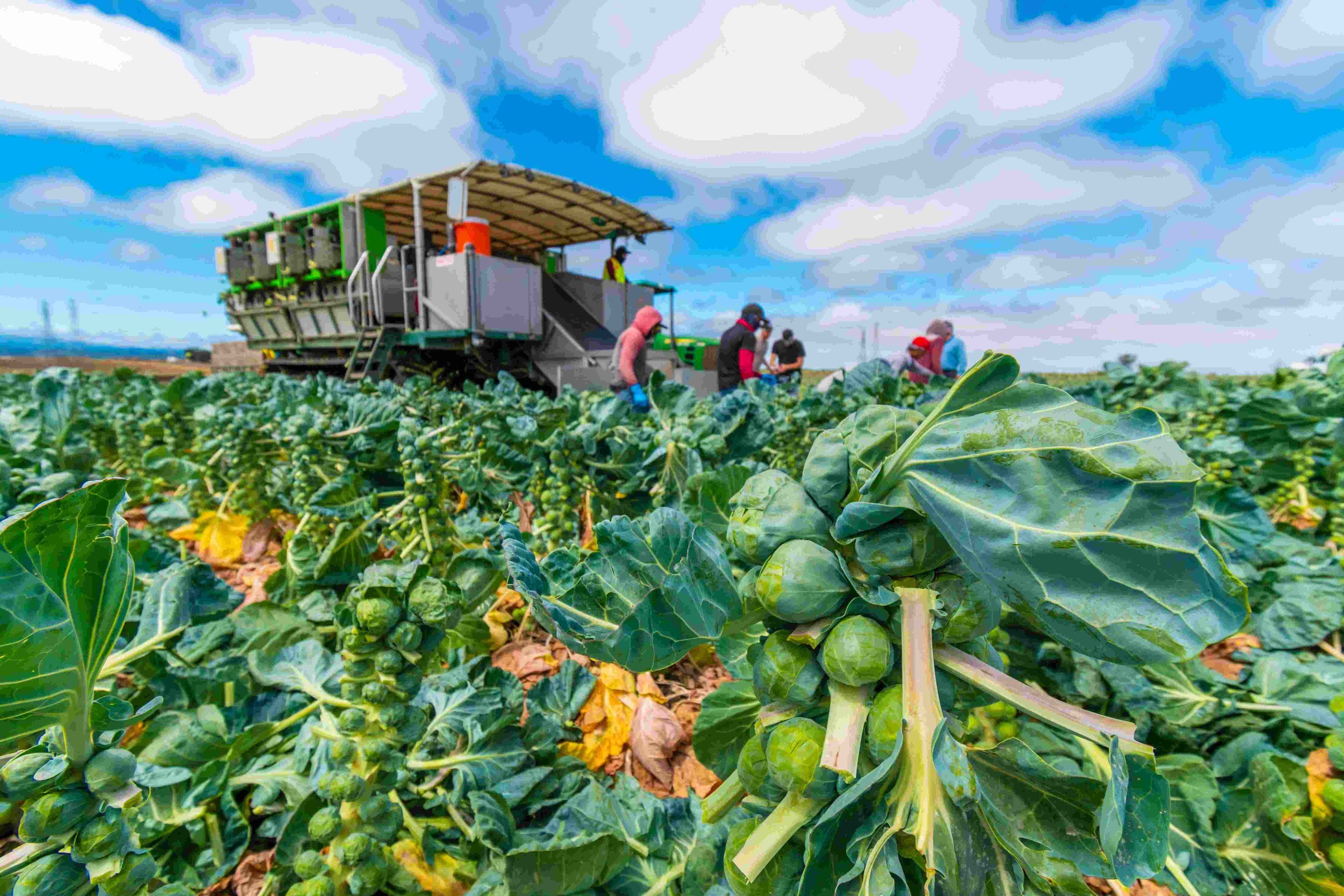Welcome to the world of farm-to-table jobs, where fresh, local ingredients take center stage. Farm-to-table is a growing movement that connects consumers with the source of their food, supporting local farmers and promoting sustainable practices. Whether you’re a chef, farmer, or simply passionate about food, there are countless opportunities in the farm-to-table industry. Join us at bigtobokki.vn as we explore the exciting world of farm-to-table jobs and provide you with the knowledge and resources you need to succeed.
Case Studies of Successful Farm-to-Table Models
The Farm at Tassajara
Nestled in the rolling hills of California, The Farm at Tassajara is a Zen mountain center and organic farm that has been practicing farm-to-table dining for over 50 years. The farm grows a wide variety of fruits, vegetables, and herbs, which are used to prepare delicious and nutritious meals for guests and visitors. Tassajara’s commitment to sustainability and mindful eating has made it a model for other farm-to-table operations.
Related: Farm-to-Table Trends in Fine Dining
| Name | Location | Type of Cuisine |
|---|---|---|
| The Farm at Tassajara | California | Zen-inspired vegetarian |
| Blue Hill at Stone Barns | New York | American |
| Chez Panisse | California | French-Californian |
Blue Hill at Stone Barns
Blue Hill at Stone Barns is a world-renowned restaurant located in the Hudson Valley of New York. The restaurant is known for its commitment to using fresh, local ingredients, many of which are grown on the farm at Stone Barns. Blue Hill’s menu changes daily, depending on what is in season. The restaurant has been praised for its innovative and delicious cuisine, and it has been awarded two Michelin stars.
Related: Farm-to-Table Baking and Desserts
- Farm-to-table restaurants often have a close relationship with local farmers.
- Farm-to-table restaurants often use seasonal ingredients.
- Farm-to-table restaurants often offer a unique and memorable dining experience.

Farm-to-Table Trends in Fine Dining
Farm-to-table dining is becoming increasingly popular in fine dining restaurants. This trend is driven by a desire for fresh, local, and sustainable food. Farm-to-table restaurants often have a close relationship with local farmers, and they use seasonal ingredients to create unique and memorable dining experiences.
Some of the benefits of farm-to-table dining include:
- Fresher, more flavorful food
- Support for local farmers
- Reduced environmental impact
If you’re looking for a truly special dining experience, consider trying a farm-to-table restaurant. You won’t be disappointed!
| Name | Location | Type of Cuisine |
|---|---|---|
| The Farm at Tassajara | California | Zen-inspired vegetarian |
| Blue Hill at Stone Barns | New York | American |
| Chez Panisse | California | French-Californian |
Related: Farm-to-Table Baking and Desserts

Farm-to-Table Baking and Desserts
Sweet Treats, Fresh from the Farm
Farm-to-table baking and desserts are a delicious way to enjoy the freshest ingredients. When you choose farm-to-table desserts, you’re not only supporting local farmers, but you’re also getting the highest quality ingredients. Farm-to-table desserts are often made with seasonal fruits and vegetables, so you can be sure that you’re getting the best flavors of the season.
The Benefits of Farm-to-Table Baking
There are many benefits to choosing farm-to-table baking and desserts. Some of the benefits include:
- Fresher, more flavorful ingredients
- Support for local farmers
- Reduced environmental impact
| Name | Location | Type of Cuisine |
|---|---|---|
| The Farm at Tassajara | California | Zen-inspired vegetarian |
| Blue Hill at Stone Barns | New York | American |
| Chez Panisse | California | French-Californian |
If you’re looking for a truly special dessert experience, consider trying a farm-to-table bakery or restaurant. You won’t be disappointed!
Here are some tips for finding farm-to-table desserts near you:
- Ask your local farmers market
- Search online for “farm-to-table desserts” in your area
- Read reviews of local restaurants and bakeries
Once you’ve found a few farm-to-table dessert options, be sure to give them a try. You’ll be glad you did!

Building Relationships with Local Farmers
The Importance of Collaboration
Building strong relationships with local farmers is essential for the success of any farm-to-table operation. Farmers provide the fresh, high-quality ingredients that are the foundation of farm-to-table cuisine. By working closely with farmers, chefs and restaurateurs can ensure that they have a reliable supply of the ingredients they need, and that they are getting the best possible price.
There are many ways to build relationships with local farmers. One way is to visit their farms and get to know them and their operation. Another way is to attend local farmers markets and talk to the farmers who sell their products there. You can also join a local farm-to-table organization or network.
Benefits of Building Relationships
There are many benefits to building relationships with local farmers. Some of the benefits include:
| Company | Contact | Country |
|---|---|---|
| Alfreds Futterkiste | Maria Anders | Germany |
| Ana Trujillo Emparedados y helados | Ana Trujillo | Mexico |
| Antonio Moreno Taquería | Antonio Moreno | Mexico |
Building relationships with local farmers is a win-win situation for both farmers and chefs. By working together, they can create a sustainable and mutually beneficial relationship that benefits the entire community.

The Role of Seafood in Farm-to-Table
Seafood is an important part of the farm-to-table movement. Fish and shellfish are a healthy and sustainable source of protein, and they can be used to create delicious and nutritious dishes. Farm-to-table seafood is caught or harvested by local fishermen, and it is then sold directly to restaurants and consumers. This ensures that the seafood is fresh and of high quality.
| Company | Contact | Country |
|---|---|---|
| Alfreds Futterkiste | Maria Anders | Germany |
| Ana Trujillo Emparedados y helados | Ana Trujillo | Mexico |
| Antonio Moreno Taquería | Antonio Moreno | Mexico |
There are many benefits to eating farm-to-table seafood. Some of the benefits include:
If you’re looking for a healthy and sustainable way to eat seafood, consider choosing farm-to-table options. You’ll be glad you did!

Menu Planning in Farm-to-Table Cuisine
Menu planning in farm-to-table cuisine is all about using fresh, seasonal ingredients to create delicious and nutritious dishes. Chefs who follow the farm-to-table philosophy work closely with local farmers to get the best possible ingredients. This means that the menu changes often, depending on what’s in season. But one thing that never changes is the focus on quality and flavor.
Here are some tips for menu planning in farm-to-table cuisine:
- Start with the freshest ingredients possible.
- Use seasonal ingredients to create dishes that are bursting with flavor.
- Be creative and experiment with different flavor combinations.
- Don’t be afraid to ask your local farmers for advice on what’s in season and what’s good.
| Company | Contact | Country |
|---|---|---|
| Alfreds Futterkiste | Maria Anders | Germany |
| Ana Trujillo Emparedados y helados | Ana Trujillo | Mexico |
| Antonio Moreno Taquería | Antonio Moreno | Mexico |
With a little planning, you can create farm-to-table menus that are both delicious and nutritious. So next time you’re planning a meal, think about using fresh, seasonal ingredients from your local farmers.
Here are some examples of farm-to-table dishes:
- Grilled salmon with roasted vegetables
- Roasted chicken with mashed potatoes and gravy
- Pasta with fresh tomatoes and basil
- Apple pie with vanilla ice cream
These are just a few examples, of course. The possibilities are endless when you’re cooking with fresh, seasonal ingredients.
So next time you’re looking for a delicious and nutritious meal, consider choosing farm-to-table options. You’ll be glad you did!

The Role of Organic Farming in Farm-to-Table
Organic Farming: A Sustainable Approach
Organic farming is a method of farming that emphasizes the use of natural resources and avoids the use of synthetic pesticides and fertilizers. Organic farmers believe that this approach produces healthier food and is better for the environment. There is a growing demand for organic food, as consumers become more aware of the benefits of eating healthy and sustainably produced food.
| Company | Contact | Country |
|---|---|---|
| Alfreds Futterkiste | Maria Anders | Germany |
| Ana Trujillo Emparedados y helados | Ana Trujillo | Mexico |
| Antonio Moreno Taquería | Antonio Moreno | Mexico |
Benefits of Organic Farming
There are many benefits to organic farming, including:
If you are looking for a healthy and sustainable way to eat, consider choosing organic food. You’ll be glad you did!
Challenges of Organic Farming
There are also some challenges to organic farming, including:
- Lower yields
- Higher costs
- More labor-intensive
Despite these challenges, organic farming is a growing movement. As consumers become more aware of the benefits of organic food, the demand for organic products is increasing.

The Ethics of Meat Sourcing in Farm-to-Table
Animal Welfare
One of the most important ethical considerations in meat sourcing is animal welfare. Animals raised for food should be treated humanely, with access to clean water, food, and shelter. They should also be free from pain and suffering. Farm-to-table restaurants often work with local farmers who raise animals in a humane and sustainable way.
Related: Case Studies of Successful Farm-to-Table Models
| Company | Contact | Country |
|---|---|---|
| Alfreds Futterkiste | Maria Anders | Germany |
| Ana Trujillo Emparedados y helados | Ana Trujillo | Mexico |
| Antonio Moreno Taquería | Antonio Moreno | Mexico |
Environmental Impact
Another important ethical consideration is the environmental impact of meat production. Meat production can contribute to greenhouse gas emissions, water pollution, and deforestation. Farm-to-table restaurants often work with farmers who use sustainable farming practices, such as rotational grazing and organic farming.
Related: Farm-to-Table Trends in Fine Dining
- Animal welfare
- Environmental impact
- Economic sustainability

Sourcing Locally: Challenges and Benefits
Challenges of Sourcing Locally
There are some challenges to sourcing locally, including:
- Limited availability: Not all ingredients are available locally year-round.
- Higher costs: Local ingredients can be more expensive than those that are shipped from far away.
- Food safety: It is important to make sure that local ingredients are grown and handled safely.
Benefits of Sourcing Locally
Despite the challenges, there are also many benefits to sourcing locally, including:
- Fresher ingredients: Local ingredients are typically fresher than those that are shipped from far away.
- Better flavor: Local ingredients often have a better flavor than those that are shipped from far away.
- Support for local farmers: Sourcing locally helps to support local farmers and the local economy.
| Company | Contact | Country |
|---|---|---|
| Alfreds Futterkiste | Maria Anders | Germany |
Related: Building Relationships with Local Farmers
Tips for Sourcing Locally
Here are some tips for sourcing locally:
- Visit your local farmers market.
- Join a community supported agriculture (CSA) program.
- Talk to your local chefs and restaurateurs.
Related: Farm-to-Table Trends in Fine Dining

Farm-to-Table Marketing Strategies
Marketing is a way to tell people about your farm-to-table business. There are many different ways to market your business, such as social media, email marketing, and print advertising. You can also use your website to tell people about your farm and your products.
Here are some tips for marketing your farm-to-table business:
- Use social media to share photos of your farm and your products.
- Start an email list and send out regular newsletters to your subscribers.
- Place ads in local newspapers and magazines.
- Create a website for your business and make sure it is easy to find.
| Company | Contact | Country |
|---|---|---|
| Alfreds Futterkiste | Maria Anders | Germany |
| Ana Trujillo Emparedados y helados | Ana Trujillo | Mexico |
| Antonio Moreno Taquería | Antonio Moreno | Mexico |
Related: Case Studies of Successful Farm-to-Table Models
By following these tips, you can effectively market your farm-to-table business and reach more customers.
Understanding the Farm-to-Table Concept
The farm-to-table concept is all about eating food that is grown and raised locally. This means that the food is fresh and has not been shipped long distances. Farm-to-table food is often more flavorful and nutritious than food that is shipped from far away.
There are many benefits to eating farm-to-table food. For one, it is better for the environment. Shipping food long distances uses a lot of energy and resources. Eating local food helps to reduce greenhouse gas emissions and other forms of pollution.
Eating farm-to-table food is also better for your health. Fresh, local food is more likely to contain vitamins and minerals than food that has been shipped long distances. Local food is also less likely to contain pesticides and other harmful chemicals.
If you are looking for a way to eat healthier and more sustainably, consider choosing farm-to-table options. You’ll be glad you did!
| Company | Contact | Country |
|---|---|---|
| Alfreds Futterkiste | Maria Anders | Germany |
Related: Case Studies of Successful Farm-to-Table Models
- Coffee
- Tea
- Milk
The Impact of Farm-to-Table on Local Economies
Creating Jobs and Supporting Local Businesses
The farm-to-table movement creates jobs and supports local businesses. Farms that sell directly to restaurants and consumers need more workers to grow, harvest, and transport their products. Restaurants that use local ingredients often need more chefs and kitchen staff to prepare the food. And businesses that support the farm-to-table movement, such as farmers markets and food distributors, also create jobs.
Related: Building Relationships with Local Farmers
| Company | Contact | Country |
|---|---|---|
| Alfreds Futterkiste | Maria Anders | Germany |
| Ana Trujillo Emparedados y helados | Ana Trujillo | Mexico |
| Antonio Moreno Taquería | Antonio Moreno | Mexico |
Boosting the Local Economy
The farm-to-table movement boosts the local economy. When people buy food from local farmers and businesses, the money stays in the community. This helps to create a more vibrant and sustainable local economy. In addition, the farm-to-table movement can help to attract tourists and new residents to an area.
Related: Farm-to-Table Trends in Fine Dining
Preserving Local Food Traditions
The farm-to-table movement helps to preserve local food traditions. By supporting local farmers, consumers are helping to keep traditional farming practices alive. This is important for preserving the cultural heritage of a region and for ensuring that future generations can enjoy the same fresh, local food that we do today.
- Coffee
- Tea
- Milk
Final Thought
The farm-to-table movement is not just a trend; it’s a way of life that values fresh, local, and sustainable food. By choosing farm-to-table options, you’re not only supporting local businesses and farmers but also making a positive impact on the environment and your health. Whether you’re a consumer, a chef, or a farmer, there’s a place for you in the farm-to-table movement. Embrace the opportunity to connect with your food and make a difference in your community.




